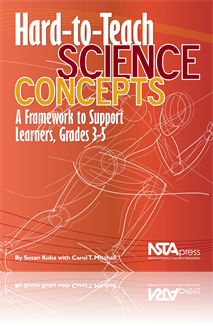All Book Chapters
Book Chapter
Learners explore the importance of rice as a food source, the differences among types of rice, the life cycle of rice, and rice production methods. Learners also explore control, variables, and experimental design by investigation how rice grows and ...
Book Chapter
Nano2Earth Curriculum and the National Science Education Standards
With the Nano2Earth curriculum, students learn about nanotechnology and nanoscience by using inquiry to study groundwater pollution. The curriculum is designed to meet the National Science Education Standards (NSES) for content in grades 9–12 (NRC ...
Book Chapter
What Are Nanoscience and Nanotechnology? A Nano Primer
In the examples presented in this chapter, the authors have defined the nanoscale and nanoscience. They have seen surprising results for two “ordinary” phenomena that they thought they knew everything about, but which were both shown to have su...
Book Chapter
Historical and Societal Aspects of Nanoscale Science and Technology
The nanorevolution is here to stay. It is this small scale—where we have the ability to put molecules and atoms to new uses—that fuels the hope and hype surrounding nanotechnology. This chapter discuses the origins of nanoscience, nanotechnology ...
Book Chapter
Introduction to Water Pollution
This lesson assesses students’ prior knowledge about groundwater pollution and has students investigate types and sources of water pollution. Note that this introductory activity sets the stage for subsequent learning about sources of water polluti...
Book Chapter
Nanoscale science and technology play central roles in our understanding of how Earth works and in the environmental science field of study. As a freshwater source, groundwater is second in abundance only to water found in glaciers and polar ice. Gro...
Book Chapter
In this lesson, students study the reduction of iron oxide minerals in a simulated anaerobic aquatic environment. Students discuss how the respiration of anaerobic bacteria may be involved with iron reduction. Students also consider problems related ...
Book Chapter
Investigation of Bacterial Transport in Groundwater
Students, in this lesson, explore the transport of bacteria in groundwater by performing a column experiment in a simulated groundwater environment. Students also investigate a groundwater scenario to learn about the influence of groundwater chemistr...
Book Chapter
Nano2Earth Curriculum Overview
The Nano2Earth curriculum is designed to promote student inquiry and learner centered investigations of microbe-mineral interactions at the nanoscale. This chapter shows how the curriculum is organized into lessons and to use the curriculum....
Book Chapter
Nanoforces in Nature: Using Atomic Force Microscopy to Explore Microbe-Mineral Interactions
This lesson uses computer simulations of an atomic force microscope to investigate bacteria-mineral forces of interaction on the order of nanonewtons over nanoscale distances of interaction. In this lesson, students • learn about the atomic force...
Book Chapter
It is not difficult to think of reasons why it is important for students to understand that a round globe represents our planet. After all, Earth is our home in space. Environmentalists remind us that it’s the only home we have, so it’s importa...
Book Chapter
This chapter from, Companion Classroom Activities for Stop Faking It! Force and Motion is about motion. Activities include Time to Roll, Describing Motion, Different Speeds, and Evaluation. ...
Book Chapter
This chapter from, Companion Classroom Activities for Stop Faking It! Force and Motion is about Newton’s Third Law. Activities include Push Back, Newton’s Third Law, Exploding Canisters and Evaluation. ...
Book Chapter
This chapter from, Companion Classroom Activities for Stop Faking It! Force and Motion is about adding directions and vectors. Activities include Direction Matters and Vector Application....
Book Chapter
This chapter from, Companion Classroom Activities for Stop Faking It! Force and Motion is about Newton’s First Law. Activities include Objects at Rest and Staying at Rest. ...





